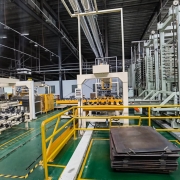What’s the Difference Between Hasl Lead Free and Hasl Lead Free?
HASL is a tin-lead alloy. It forms joints easily and is often used in hand-soldering. Its strong joints are made possible by the close molecular bonding of the two metals. This makes it a preferred finish for high-reliability applications.
HASL is a tin-lead alloy
HASL is a tin and lead alloy that is often used for electronic circuit boards. It forms strong joints easily and is commonly used for hand soldering. The two types of HASL are similar and will interact on a molecular level. These similarities make HASL an excellent choice for high-reliability applications.
Tin-lead solder has several unique characteristics. The chemical and physical properties of tin-lead solder have been the subject of extensive research over the past 50 years.
It is thinner
There are several advantages of lead free PCBs compared to HASL. Among these advantages, HASL has the best shelf life. In addition, lead free PCBs are more spreadable. This makes them better for soldering copper. However, there are several disadvantages of lead-free PCBs.
Lead-free HASL is thinner and has better coplanarity than lead-lead HASL. The difference in solder coating thickness is approximately half the lead-lead finish. Lead-free HASL has a higher melting point and requires a slight adjustment in the soldering process. The process is similar to standard HASL but uses a special flux. This flux helps in activating the copper surface of PCB. When solder is applied to the board, it is important that it has a uniform thickness. The air knife is an important tool in this process.
It is more uniform
Since the lead-free movement began in the electronics industry in 2006, lead-free soldering has become a popular method for assembling printed circuit boards. Before the move towards lead-free manufacturing, this method was considered to be an outdated technology. It was, however, the predominant finish method in North America, Europe, and Asia outside of Japan. This method is now considered to be the preferred method for lead-free production. Several Chinese printed circuit board manufacturing plants have installed lead-free HASL lines to meet the growing demand in Europe. Lead-free HASL is also gaining popularity in India and South East Asia.
The lead-free alloy is much less toxic to humans than the HASL version. Its eutectic temperature is about two hundred and seventy degrees, which is significantly lower than the HASL lead-free alloy. Moreover, it has a higher degree of mechanical strength and brightness than its lead-tin counterpart. However, there are some disadvantages associated with lead-free, such as its higher cost.
It has a longer shelf life
Hasl lead-free has a longer shelf-life than lead-lead solder. It is also cheaper and can be reworked. However, it does not provide a smooth finish and is unreliable in fine pitch applications. It also creates solder bridging along the board, resulting in a less uniform mount pad surface. Immersion tin solder is another option. It is a white metallic substance that is applied directly to copper. The two metals are very attracted to each other.
Lead-free solder has a longer shelf life than tin lead, but it has a few disadvantages. Tin lead is toxic and can cause the environment to suffer. Lead-free solder is more environmentally friendly. It is also easier to clean. Unlike lead-based solder, Hasl lead free is compatible with most alternative finishes.
It is RoHS compliant
The lead-free version of HASL is similar to conventional HASL PCB but does not use tin-lead in the production process. It is a RoHS-compliant alternative, but may not be suitable for ultra-tiny parts, such as tiny LEDs.
Lead-free HASL has a higher temperature range of 260 to 270°C, a temperature regime that can cause skewed results and board failure. HASL lead free is also less effective for SMD/BGA components with element pitches below 20 mm. In addition, LF HASL is less uniform than HASL Pb/Sn. It can also cause shorting due to lead-free vapors exuded during the application process.

